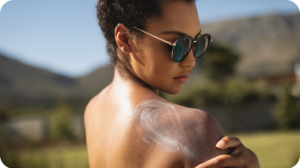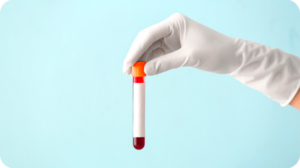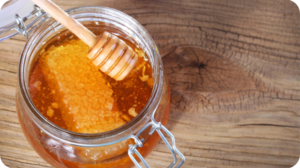The traditional Hindu wellness system called ayurveda is meant to achieve balance and wellness in life. Many elements of ayurveda involve self-care, whether that means making a nutritious meal, intentional breathwork, or engaging in the self-massage known as abhyanga.

The massage uses warmed oil gently rubbed into the skin. Abhyanga is traditionally one of ayurveda’s “daily practices” . The technique is simple, but there is a great deal of evidence that it offers substantial health benefits.
The Benefits
The skin is the body’s largest organ and has an impact on all the others. That’s why simple massage has both modest and profound effects on physical—and mental—well-being.
- Circulation. The massage aids the efficient flow and drainage of blood and lymphatic fluids, which helps remove cellular debris and other waste products from your circulatory system. Efficient circulation also ensures proper skin oxygenation, which is part of keeping your skin healthy and looking its best.
- Stress relief. Unless you’re averse to being touched, any type of massage will offer stress relief. Abhyanga is no different. The process helps soothe the nervous system, and calm your mental state.
- Sleep. This is considered a core benefit of abhyanga. In fact, it’s why many regular practitioners of the massage do it right before bedtime. It makes sense because the practice is relaxing and can ease joint and other pain.
- Skin and hair health. Because the massage extends to the head and scalp, and coats the hair with oil, it moisturizes follicles and stimulates hair growth. The massage also removes dead skin cells and can release adhesions and loosen scar tissue.
Interested in trying abhyanga? The place to start is with a trained ayurvedic practitioner. That person will establish your “constitution” (among three that are identified by ayurveda) and your particular energy type, or dosha. Based on that, you’ll be directed to the technique style and oil that will work best.
In most cases, food-grade organic oil is used—examples include coconut oil or jojoba oil. It’s also fine to use a high-quality herbal massage oil. The oil in this massage is often paired with spices suggested by the practitioner you consult.
The Process
Abhyanga massage is not difficult to learn or do. Here are the basic steps.
1: Limbs. Start at the joints closest to the torso, and work outward to the hands and feet. Rub firmly, in short, straight strokes toward the ends of the limbs.
2: Joints. Use a soft, circular motion to massage joints and any point that is tender or sore.
3: Torso. Use the same gentle circular motion for all parts of the torso.
4: Head. Lastly, gently massage the scalp, face, back of head, and neck.
5: Finish. Let the oil sit for five minutes, then wipe it off with a clean, soft cloth. Finally, rinse off with a shower or a washcloth soaked in warm to hot water.
The massage shouldn’t take more than 10 to 15 minutes, and should be a pleasant rather than painful experience at all times. Learn more about abhyanga and other ayurvedic techniques on US Department of Health and Human Service’s website, here.







